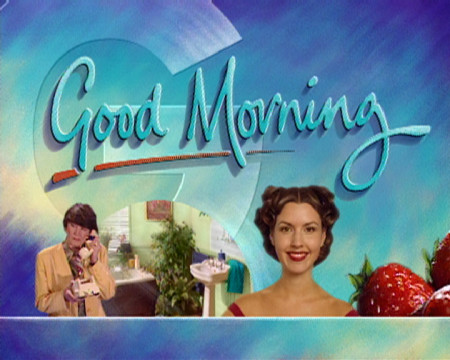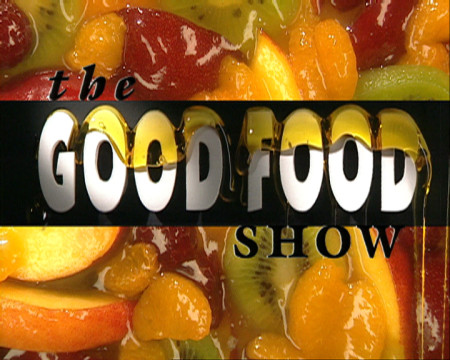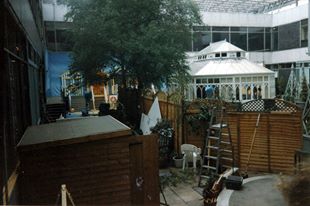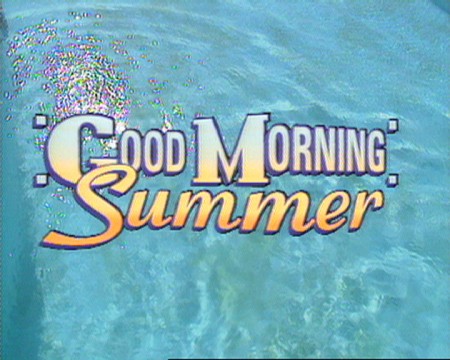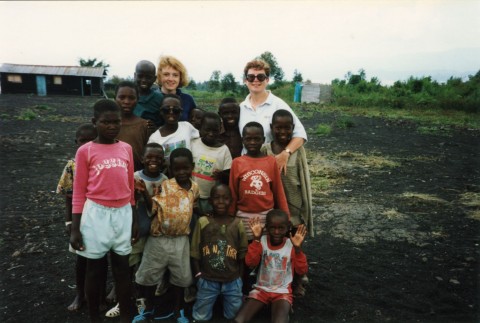
Good Morning OB in Rwanda, Caroline Officer and Sue Robinson
Photo copyright Sue Robinson, no reproduction without permission.
The date was December 1994 which began with an appeal we launched on Good Morning in September 1994 in conjunction with Oxfam requesting our viewers to knit jumpers for the Rwandan refugee children who had been displaced just over the border in Goma, Zaire (now the Democratic Republic of Congo) due to the horrific genocide in Rwanda between the Hutus and Tutsis that began exactly 20 years ago this week.
Within weeks we were inundated with jumpers, so it was decided that a team would go out to Goma in Eastern Zaire and broadcast the distribution of the jumpers live on a pre Christmas edition of the programme.
Will Hanrahan was the presenter, Sue the director and I was the producer. Jim Knights was our camera op and our engineers were lovely guys from the OB unit in London, I remember our lead engineer was called Chris.
There were no commercial flights to Goma, so for the recce Sue and I did with Chris we flew from a Kent RAF base on a Russian cargo plane, I remember being given some vodka on take off, there were no seats or seat belts and I slept on top of a large water pipe which was far more comfortable than an economy seat.
The Oxfam people in Goma were fantastic, as were the aid workers at the camps, Toby Porter, a very young emergency relief worker was hugely charismatic and we decided to use him to convey the appalling situation the children were in. Toby has continued to work for aid organisations and is now CEO of HelpAge International.
We returned to the UK and planned the broadcast for a week later.
By now we had at least 100,000 jumpers, so Oxfam arranged to fly them to Goma and we travelled with them on the same cargo plane, along with BBC news journalist Roger Hearing. For our OB engineer Chris, the challenge was building the portable satellite dish and finding a satellite to bounce off. We were lucky to have with us one of the very first satellite phones and this helped us contact an American satellite company who turned theirs towards us, it was amazing how rudimentary it was, but it worked.
I will never forget the first communication with Gallery C at Pebble Mill and clearly hearing Jane McLean in my ear as I was standing in the middle of Africa, one of those magical TV moments.
For the final link, the idea was to have all the children, about 800, wearing a jumper each and we had about 12 minutes to get them on, so we had lines of small children with their hands in the air as we rapidly worked down the line.
We’d also chosen a handful of knitters to join Anne and Nick in the studio and it was my job to ensure that the jumpers they had made were shown on the children for this final link. This connection between the donor and the recipient was another important moment. Such a simple thing as a jumper meant so much to these children and I have often thought of them in the intervening years. We stayed in touch with the aid workers for a while and did learn that quite a few of the children had been reunited with relatives.
I am very proud to have been part of this broadcast, on a personal level it was the most moving experience of my career.
Caroline Officer
